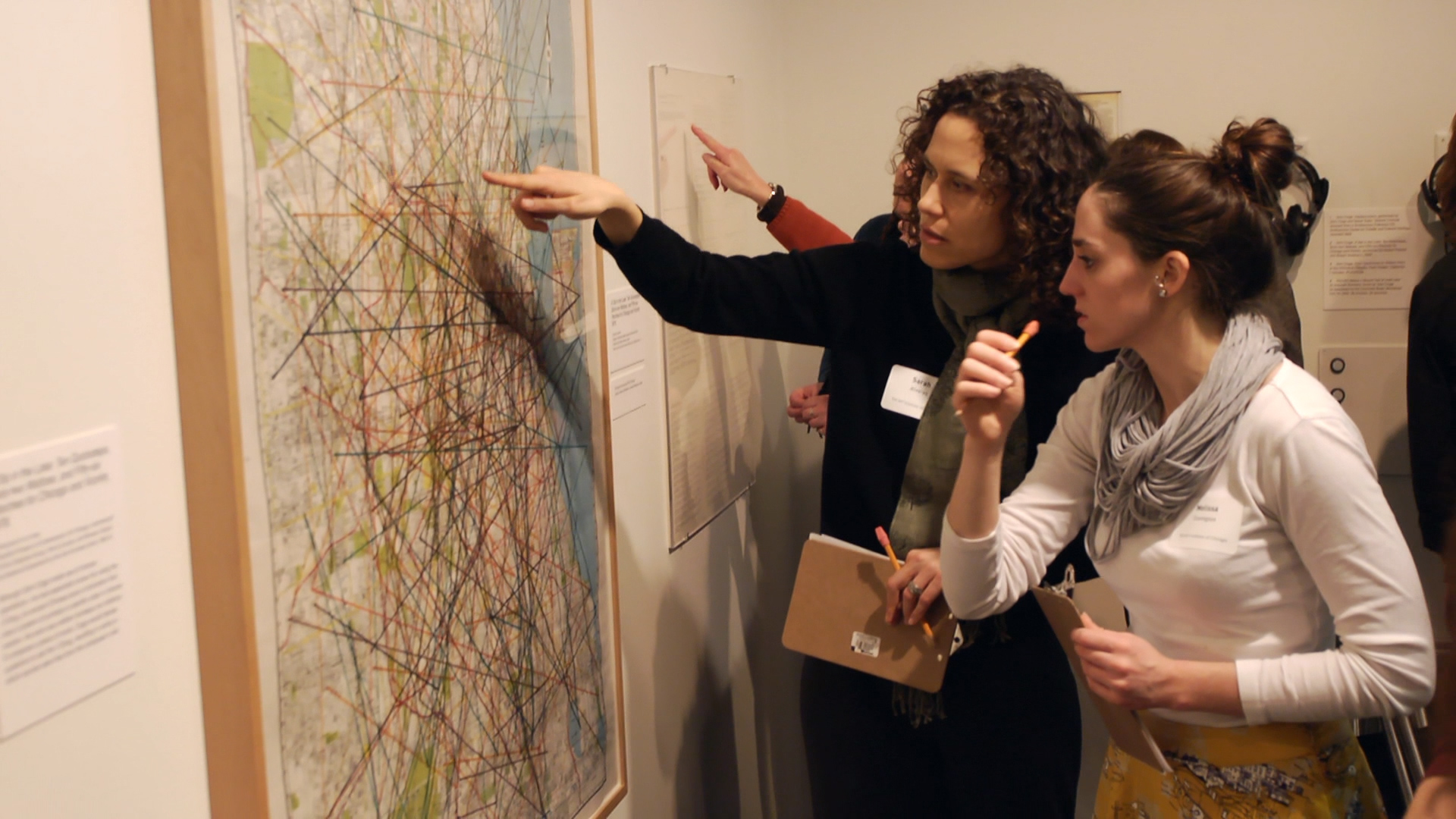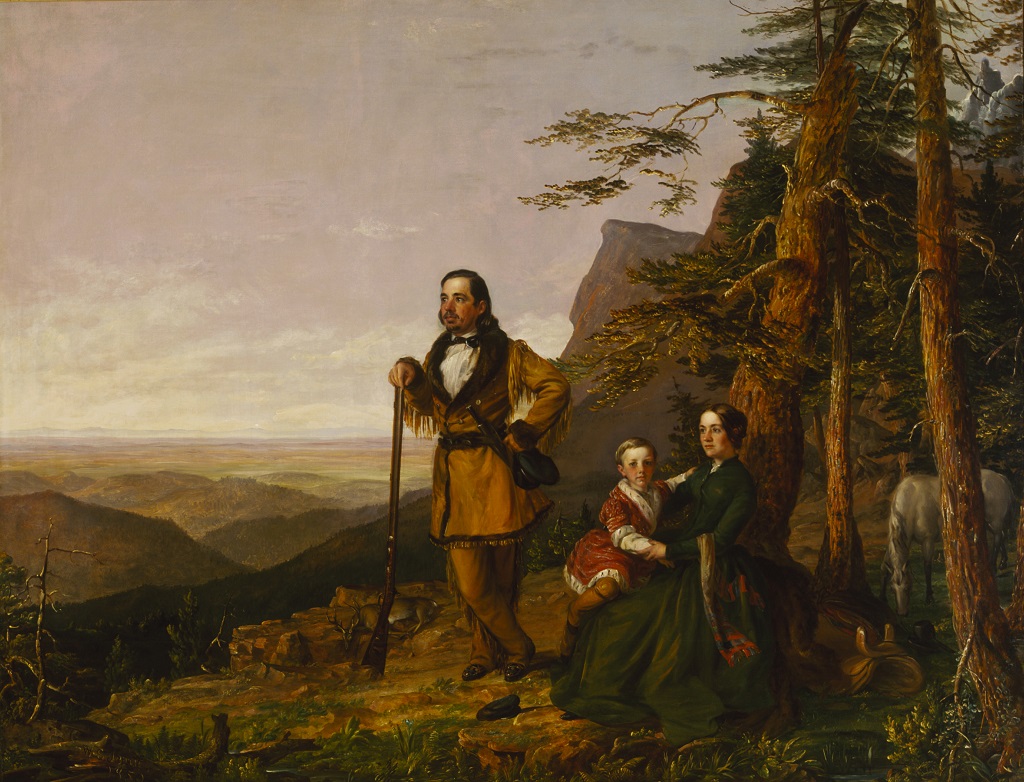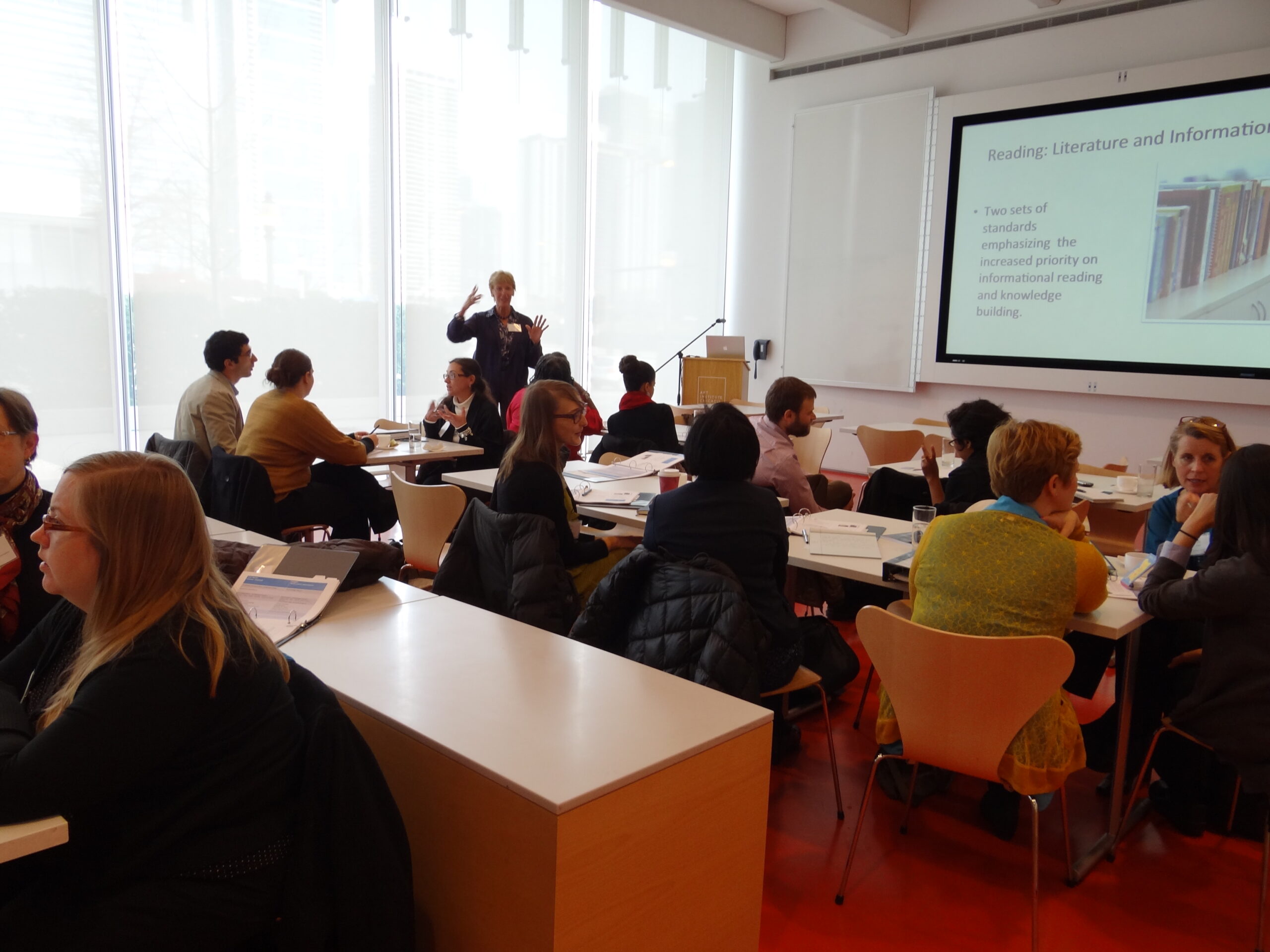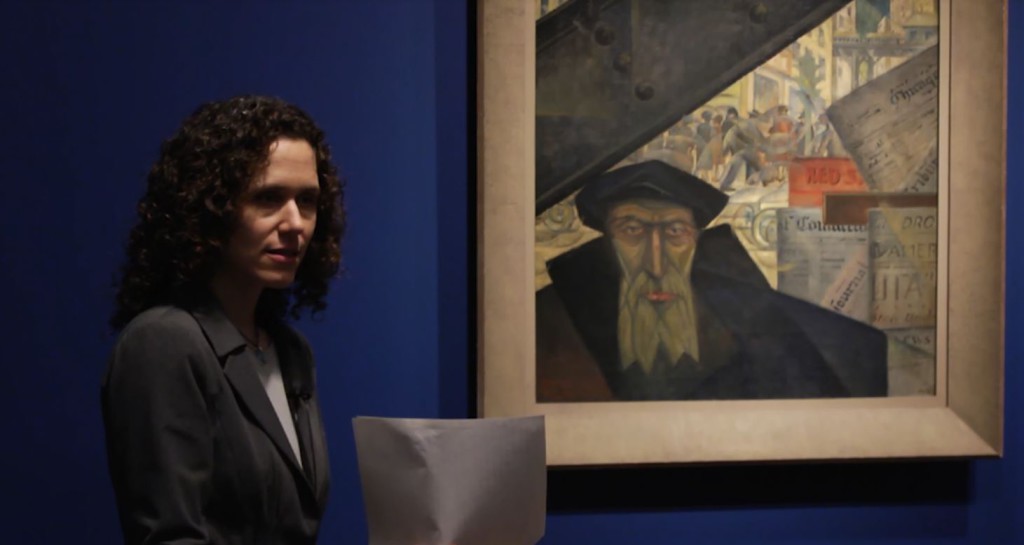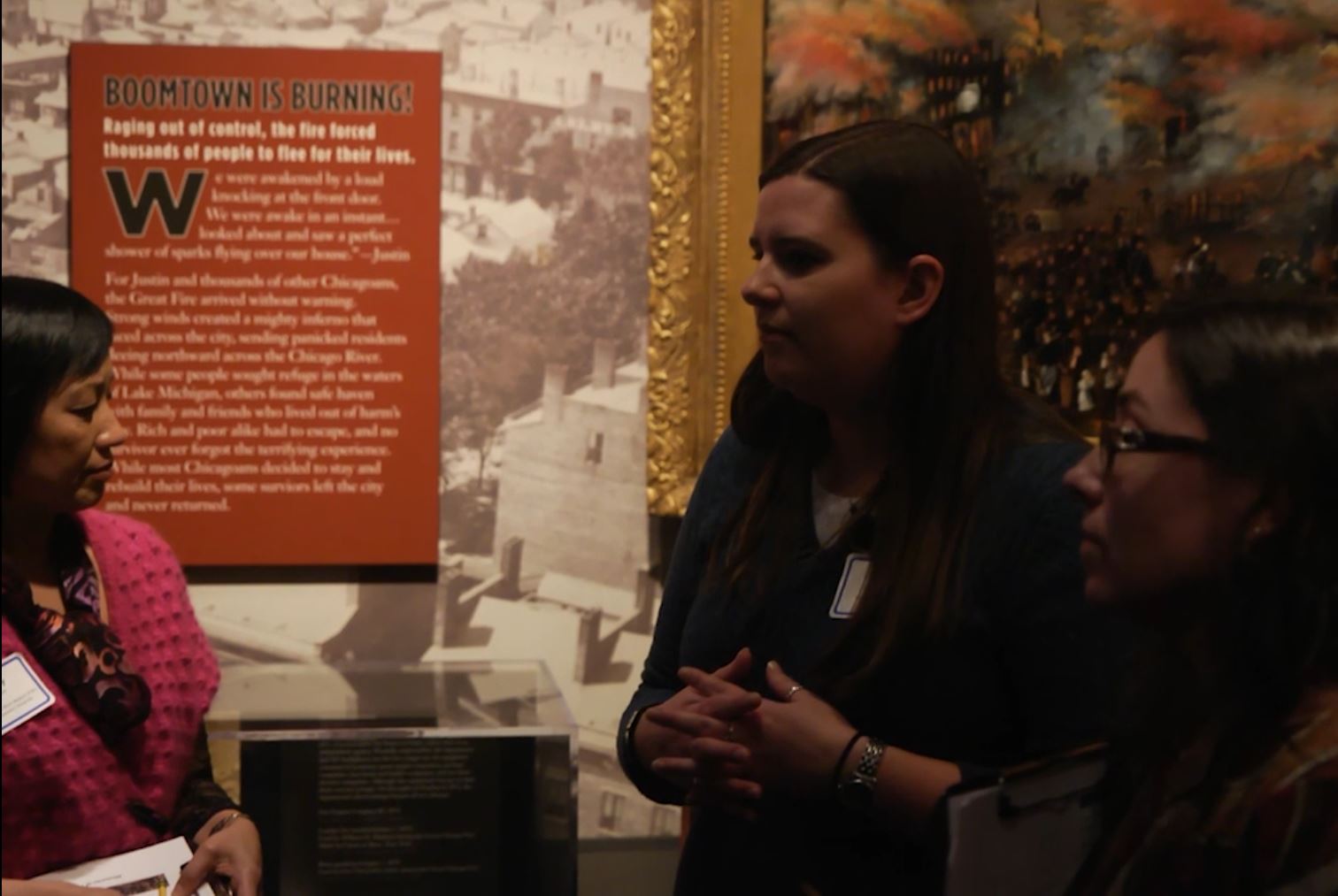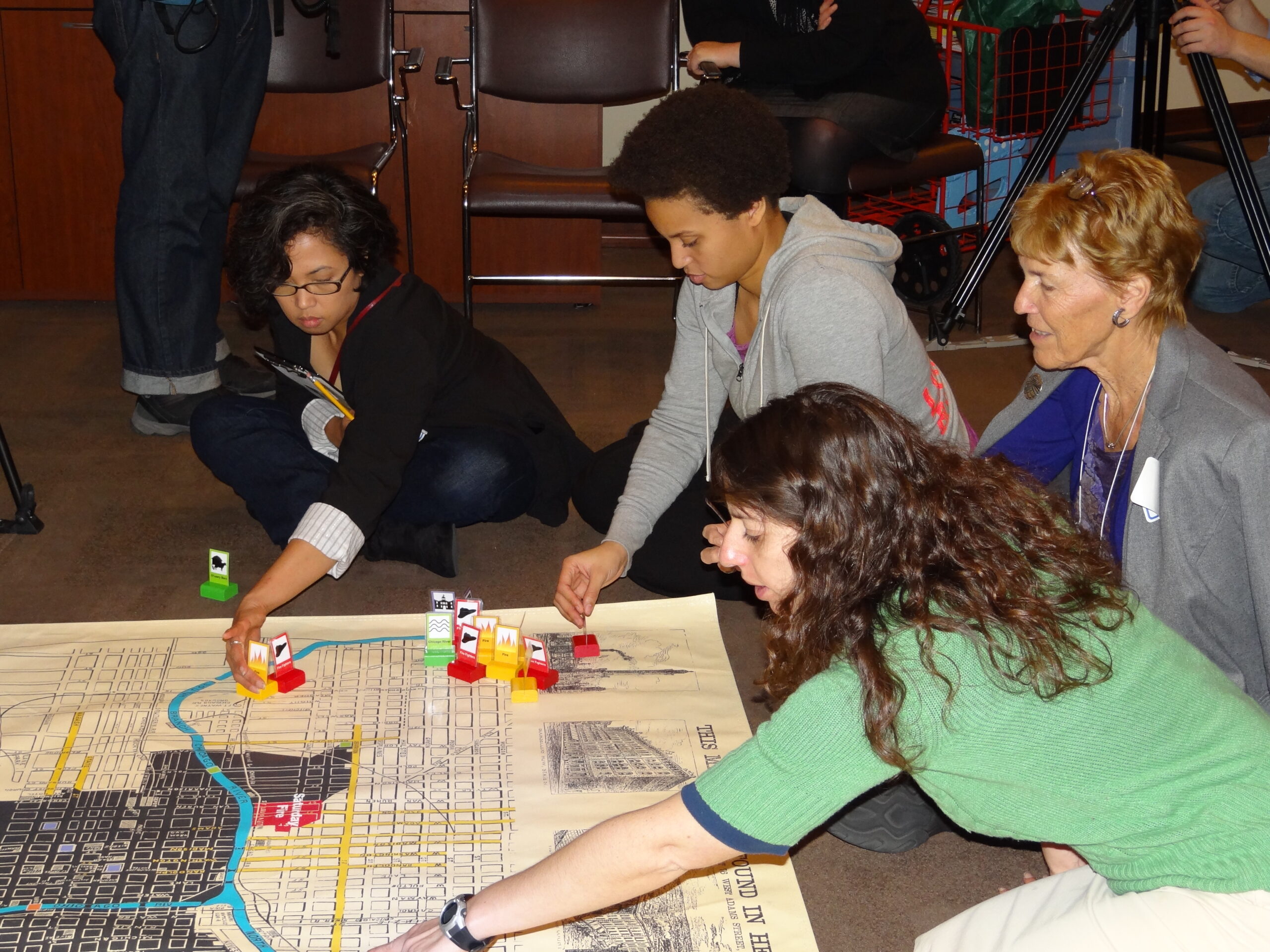Author:
Donna Ogle, Ed.D., Professor of Education at National Louis University
Steps for unit planning:
- Decide on grades and subject areas for the unit.
- Draft the theme or focus of the unit (thinking of content to be learned, possible big ideas and essential questions). Also think of the general time frame for this unit; for example, 2–3 weeks or up to 8 weeks.
- Examine curriculum foci for the grade level(s) under consideration. Can links easily be made to the social studies, visual arts, and English language arts/reading curriculums?
- Determine which of the national content standards can be developed (and assessed) within the unit.
- Common Core State Standards in English Language Arts: corestandards.org/ELA-Literacy
- National Core Arts Standards: http://nccas.wikispaces.com/Conceptual+Framework
- National Center for History in the Schools: http://www.nchs.ucla.edu/history-standards
- Pick works of art that relate to the unit theme and are appropriate for the grade(s). Further research the works to confirm and identify connections to unit focus and essential questions. (Museums or other organizations that own the artworks are often good places to start the search for information).
- Explain how the art functions in the unit: what expectations are there for developing concepts related to the art. For example, is the art used to help students think deeply about the social studies or language arts content of the unit or is the art used to help students increase their understanding of style, composition, or perspective in art, or all of the above, or something more? How many works of art are needed?
- How will achievement of the unit objectives be assessed? Is there a big project that involves both art and other discipline-based content? What ongoing formative assessments will be developed?
- Collect potential written texts and other visual objects that provide alternative perspectives on the targeted work(s) of art that will help students engage more deeply and productively with the visual experiences and will develop their ability to think critically about perspective of artists and potential interpretations.
- Write several short texts if appropriate ones are not available.
- Identify key vocabulary that students will need to know and use throughout the unit. Develop ways to assess their familiarity with the terms and also help them expand their understanding and use of these words and phrases.
Initiating the Unit Plan
- Think carefully about which of the standards can be developed in this unit— looking at the discipline-specific standards and the Common Core ELA standards. Develop an initial plan for targeted instruction on these specific standards (perhaps 2 discipline-based foci standards and 2 from ELA). If there are three separate disciplines then the three sets of standards need to be attended to with specific lessons and some assessments provided (projects with rubrics, etc.). Focus on standards across the disciplines that are mutually supportive so the unit will have integrity.
- Look more carefully at the written texts that you have available. Do some research (and check with library and content specialists) to locate as much written material as useful. How much additional written materials will need to be developed? Outline the various types of texts you have collected and insure that there is variety of perspective, text forms and that the materials are at a variety of reading levels appropriate for the grades targeted. From this analysis make a list of what additional texts need to be written.
- Determine what students need to do to provide evidence of their learning across the targeted standards; these products should include ways to be assessed and may include rubrics for performance. Some formative measures are also important, because students build knowledge over time and need continuing support; not all learning can be demonstrated within one final product.
- Begin the unit with:
- Overview that includes a brief description of the unit. This should explain the purpose, a summary of learning activities, and a suggested time frame.
- Essential questions that highlight the importance and relevance of the unit to students and that add to their learning.
- Enduring understandings that represent important ideas students will develop across the unit activities.
- Explanation of how art and other content support each other in the development of the unit objectives. This may be thought of as making the interdisciplinary connections and explaining how such an approach enhances students learning and deepens their thinking.
- Suggested plan for the lessons across the unit time frame. (Week 1, 2; Day 1, Day 2, etc.)
- Develop key lesson plans: (A minimum of 3 lessons are needed)
- The lesson that introduces the focal piece(s) of art and guides teachers in how to make this exploration of art most productive for the class.
- A lesson component that explains to students the benefit of using art as an artifact of their content learning.
- The lesson that goes in more depth to help students interpret aspects of the art.
- One or two lessons that help develop the ELA or other content standards.
- A lesson that introduces students to the project or culminating activity and the ways it is assessed.
- Lessons the teachers think are most essential.
- Develop assessments for use during the unit and as part of the culminating project. Rubrics or other guides for evaluation make this component most useful to teachers.
- Provide for some public way students can share and celebrate what they have accomplished.


